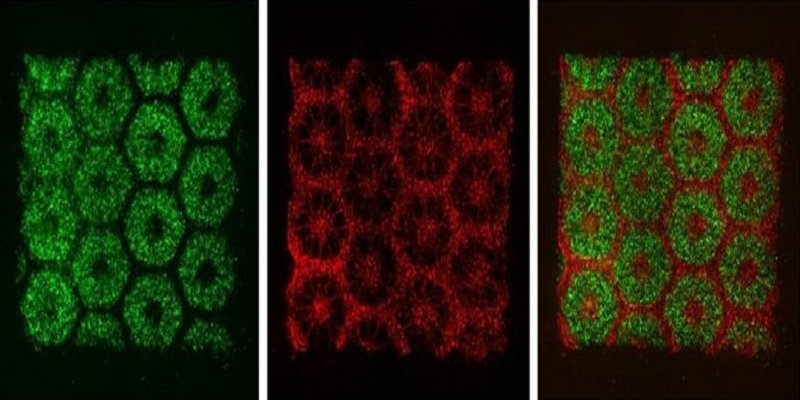
One of the most interesting things about bioprinting is that every research team working on it goes about it in a slightly – or dramatically – different way. The method used by UC San Diego was developed in the lab of Dr. Shaochen Chen, a professor of nanoengineering who specializes in bioprinting. The process involves taking stem cells from the skin of a patient and combining them with supporting endothelial and mesenchymal cells. The stem cells are pluripotent, meaning that they are capable of developing into several different types of tissue, and the fact that they’re taken from the patient’s skin means that no invasive procedures are needed to take actual liver cells.
The combined cells are printed into 3×3 millimeter square structures that are only 200 micrometers thick, in a process that takes only seconds – other forms of bioprinting generally take hours. The structures are cultured in vitro for about three weeks, allowing them to grow into tissue. When the research team tested the liver tissue, they found that it was capable of maintaining key liver functions, such as albumin secretion and urea production, for a longer period of time than existing liver models. It also produced higher levels of an enzyme that plays a major role in metabolizing many drugs.
“The liver is unique in that it receives a dual blood supply with different pressures and chemical constituents,” said Shu Chien, professor of medicine and bioengineering, who co-authored the study. “Our model has the potential of reproducing this intricate blood supply system, thus providing unprecedented understanding of the complex coupling between circulation and metabolic functions of the liver in health and disease.”
UC San Diego’s liver tissue has come closer than any other liver model in terms of replicating the diverse cell makeup and complex architecture of a real liver. This is very promising for pharmaceutical trials. According to Dr. Chen, it typically takes about 12 years and $1.8 billion to get a drug to the point of being approved by the FDA. 90% of drugs don’t pass animal or human clinical trials, so it’s back to the drawing board for drug companies. With 3D printed tissue that so closely mimics the function of a real human liver, pharmaceutical companies can begin doing pilot studies right away and narrowing the field down to the most promising drugs well before they ever get to human clinical trials.
“The liver tissue constructed by this novel 3D printing technology will also be extremely useful in reproducing in vitro disease models such as hepatitis, cirrhosis, and cancer,” added Chien. “Such realistic models will be invaluable for the study of the pathophysiology and metabolic abnormalities in these diseases and the efficacy of drug therapies.”
Using stem cells taken directly from the patient also means that drug testing can be targeted specifically towards individuals, and the research team hopes that their method could eventually lead to the 3D printing of patient-specific organs. You can access the full study here. Discuss in the 3D Printed Liver Tissue forum over at 3DPB.com.
